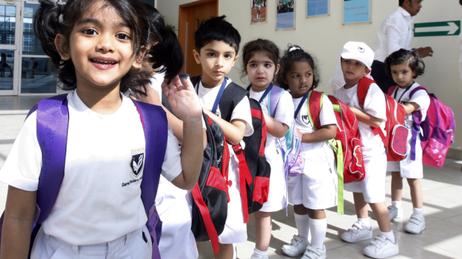While media coverage surrounding gangs in school has subsided in recent years, the problem is still alarming. The National Center for Education Statistics reports that 23 percent of public schools experienced incidents of street gangs in their public school hallways. To protect students from local gangs, public schools are working to create action plans specifically targeted toward the phenomenon of street gang psychology.
Are Gangs Still a Problem in Public Schools?
While not every school and community is forced to cope with gang affiliations, nearly a quarter of the country’s public schools are directly confronted by street gangs. Reviewing further details from the National Center for Education Statistics, investigators report that “Street gangs are organized groups that are often involved in drugs, weapons trafficking, and violence.” Street gangs in public schools stimulate a climate of fear amongst students and teachers. Additionally, street gangs also increase the incidents of violent actions and outbreaks on campus.
Although studies show that urban schools are more likely to report the presence of gangs, surrounding suburban areas are still targeted areas for gang activity. 31% of urban public school students report gang occurrences on campus, but 18% of suburban public schools also face these issues.
This video reports on the creation of a gang task force in Atlanta schools.
What Causes Gang Issues and Affiliations?
According to research, teens and younger children choose to join a gang for a variety of reasons. The many potentially motivating factors leading some students to join a gang include:
- Peer pressure
- Boredom
- A lack of friends or feelings of not belonging to a group or community
- Lack of self-esteem/confidence
- Inability to resist the luring temptations of a gang
- The desire to feel powerful and respected
How are Schools Responding to Gang Issues?
Depending on each area’s specific gang environment, every school and district has created its own gang response plans. For example, Wake County Public School System (WCPSS), one of the largest school counties in North Carolina, has established an intensified and proactive plan to cease gang involvement and issues. When the WCPSS was forced to confront various gang-related issues in specific schools in the county, the WCPSS Board of Education created a policy that allowed school officials to work more closely with legal officers. With this policy, the WCPSS regulations specifically prohibit any public school student from committing acts that further gang or gang-related activities. As a result of this new consequence, students who are in gangs, affiliated with gangs, or who are in any way enticing gangs to act out will be reprimanded.
To enforce its gang policy, the WCPSS has established various training and educational programs for staff members. Specifically, teachers and school employees are able to attend “Basic Gang Awareness” sessions, wherein participants learn about the secret identification habits of gangs, including colors, symbols, and signs. Additionally, a more thorough training program evaluates how participants can address, suppress, intervene, and prevent gang-affiliated activities.
Furthermore, along with the increased educational measures for school employees, WCPSS has taken additional security measures, including “Access control devices, security cameras and school resource officers in all our middle and high schools, security officers in our high schools and an emergency operations plan that covers everything from acts of violence at a school to a chemical spill in the community.”
Interestingly, since WCPSS created its new gang reaction methods, the schools have actually seen a rise in reported gang incidents of 26 percent from 2005 to 2008. While this rise seems counter-intuitive, experts and law enforcement officials confirm that a rise in gang reports is actually a positive sign, as this confirms that the school employees and students are now addressing and confronting behaviors that may have been previously ignored.
Although there is a rising number of gang reports, the WCPSS further confirms that its measures are effective with proof of the decline in violent incidents at schools. Specifically, the North Carolina Department of Public Instruction’s Annual Report on School Crime and Violence reveals that WCPSS’s school crime and violence incidents have dropped by 24 percent since 2005.
This video reports on the gang situation in one of the most dangerous schools in America.
How Should My Child’s Public School React to Gangs?
If your child is attending school in an area with reported gang incidents, then you should investigate the school’s gang regulations and enforcement policies. Typically, the best methods for ceasing and preventing gang violence involve plans that include increased education, greater community involvement, and specific consequences for inappropriate gang-related behaviors or affiliations. If your child’s school does not have clear or effective policies, parents have the right to attend their school’s PTSA or school board meeting to fight for increased support and protection.
School districts across the United States have implemented various strategies to address gang violence within schools and their communities. One common approach is the adoption of comprehensive anti-gang programs and initiatives. These programs typically involve partnerships with local law enforcement agencies, community organizations, and social service providers to provide support, resources, and mentorship to at-risk youth. School-based intervention programs have also been developed to identify and support students who may be at risk of gang involvement, aiming to divert them away from such activities and towards more positive alternatives. Moreover, some districts have established specialized units of school police officers who receive additional training in gang prevention and intervention to maintain a safe school environment. These measures are often complemented by efforts to improve the overall school climate and promote a sense of belonging, which research has shown can be significant in reducing gang activity. School districts strive to create an environment where students are less likely to be drawn toward gangs by fostering positive relationships and offering engaging educational opportunities. It's important to note that specific approaches may vary between districts based on their unique needs and circumstances.
Sources
Esbensen, F. A., & Osgood, D. W. (2019). School-based gang prevention: A systematic review and meta-analysis. Journal of Experimental Criminology, 15(4), 471-496.
Taylor, R. B. (2016). School-based crime prevention. Oxford Research Encyclopedia of Criminology.
American Institutes for Research. (2017). Comprehensive anti-gang strategies and programs for the City of Salinas. Office of Community Oriented Policing Services. U.S. Department of Justice.
Questions? Contact us on Facebook. @publicschoolreview
#SchoolSafety #GangViolencePrevention #AtRiskYouth #CommunityPartnerships #PositiveSchoolEnvironment














